Palantir Explained Like It’s Software (Because It Is)

Everybody knows the name. Nobody really knows what the software actually does. Palantir is that mysterious thing people reference in debates about surveillance, usually followed by someone comparing it to 1984 for the hundredth time. Let me be clear upfront: this is not one of those posts. No “evil empire” narrative, no dystopian spice. That angle has been chewed on enough. I’m leaving the politics aside here: not because I endorse or oppose Palantir, but because I think it’s crucial to understand what a tool actually is before judging how it’s used. That nuance often gets lost in debates.
What I want here is the other side: the technical guts. How the software works, what the UI looks like, what happens when you actually use it. Forget the politics for a moment, this is about treating Palantir like what it is at its core: software.
Not One Software, but a Stack
First thing to clear up: there isn’t just one mythical “Palantir software.” People often talk about it like it’s a single black box humming in Peter Thiel’s basement. In reality, Palantir sells a stack of different platforms. The two big ones are Gotham and Foundry. Same DNA, different target groups. Gotham is built for investigators and government agencies, Foundry for enterprises and industry. On top of that, there’s Apollo (deployment) and AIP (AI add-ons).
And another important point: Palantir is not a giant vacuum cleaner that goes out and collects data on its own. You have to bring the data yourself. The value is in how it can take what you already have (scattered databases, PDFs, logs, ERP tables…) and link them into one coherent model.
So when someone casually drops “Palantir” in a conversation, it’s a bit like saying “Adobe” …do you mean Photoshop, Acrobat, Illustrator? Same company, different tools.
Gotham – The Investigator’s Playground
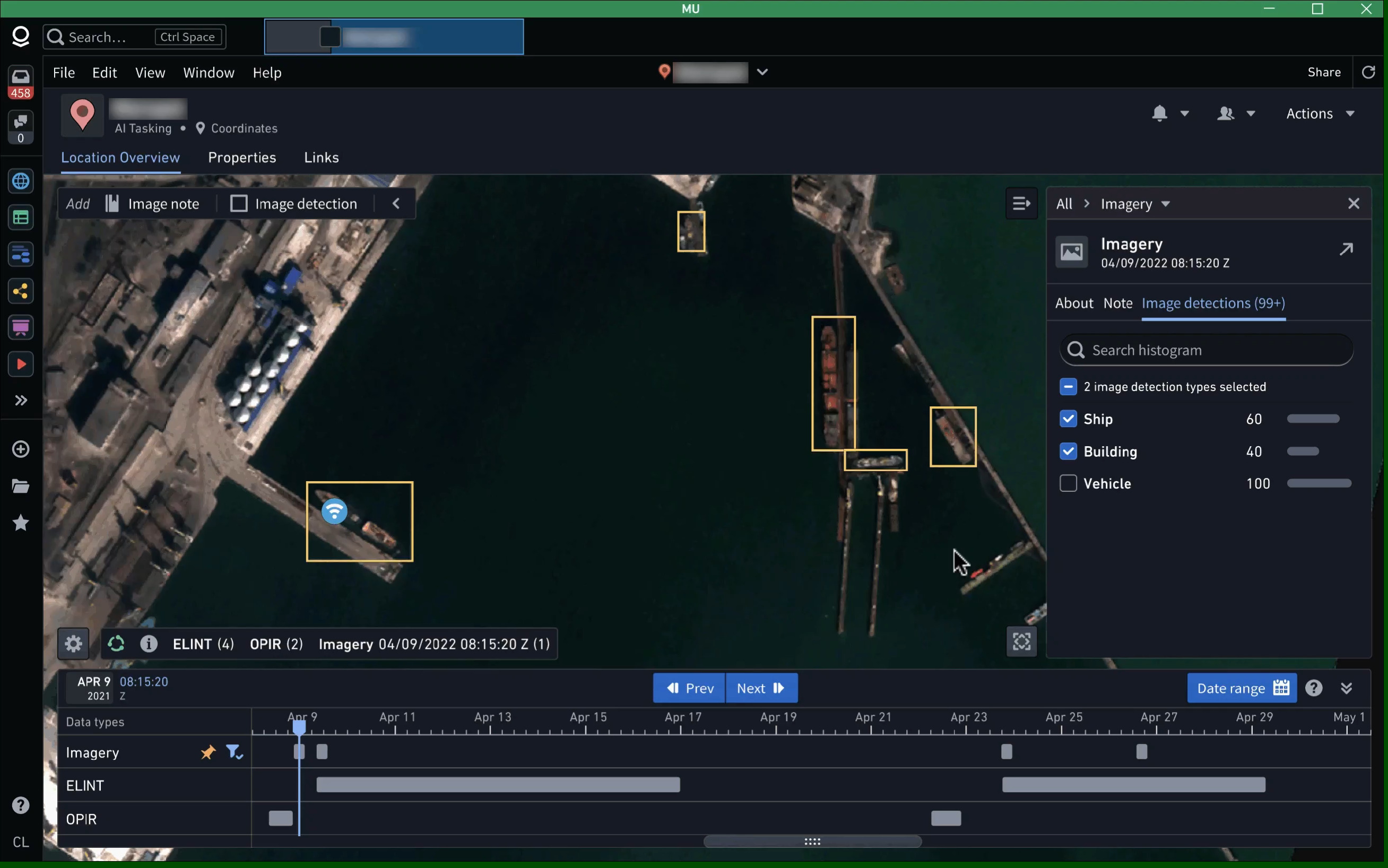
Screenshot of an open workflow, watching boat movements, via official website
If you want the “spy movie” part of Palantir, this is it. Gotham is the platform built for police, intelligence and anyone who spends their days drowning in case files. Think crime data, PDF reports, phone records, geodata. Gotham stitches all of it together. But instead of one giant database, think of Gotham as a workspace that connects a messy zoo of data sources and turns them into something you can actually work with.
At its core, Gotham does three big things (in that order):
Integration: It pulls in data from everywhere, structured (like SQL databases or call detail records) and unstructured (PDF reports, Word files, surveillance logs). Even photos and videos can be referenced. You don’t have to migrate all data into one monster warehouse, Gotham can link sources federated.
Extraction & Linking: Drop in a PDF and Gotham will automatically look for entities like names, addresses, phone numbers, license plates. It then links those entities to existing records. Suddenly that one address from page 47 of a witness statement lights up in the graph as connected to five other cases.
Visualization: This is where Gotham shines for investigators. It offers different lenses: a graph of nodes and edges, a timeline of events and a map overlay for movements and hotspots. All of these views are live-linked, so clicking on one node in the graph highlights it on the map and timeline too.
So what does that feel like in practice? Imagine you’re an investigator. You upload fifty PDFs from a drug case, Gotham extracts the names, links them to phone records and suddenly your screen shows a neat web of who called whom, when they moved across the city and which addresses keep popping up. It’s less “Hollywood AI predicting crimes” and more “finally a tool that spares me from copy-pasting the same phone number into ten Excel sheets.”
On top of that, Gotham includes so called workflow tools. You can open a case, tag hypotheses, share them with colleagues. Every action is logged (who looked at what, who changed what) and data access is restricted via fine-grained security tags. Which means one officer might see the phone number but not the financial record attached, depending on clearance.
In short: Gotham is not some oracle that spits out the bad guy’s name. It’s a giant integration and visualization machine. Its job is to stitch together messy, siloed data and make it searchable, explorable and shareable for investigators who don’t want to code their own graph database.
You don’t see much of recorded Gotham usage in the wild (meaning outside of Palantir presentations). The company prefers to show fancy 3D renders that look like they were designed for a Marvel movie, not for a police workstation. But the modified (or stripped-down, depending on who you ask) German version is a different story…
Gotham in Germany: The DAP
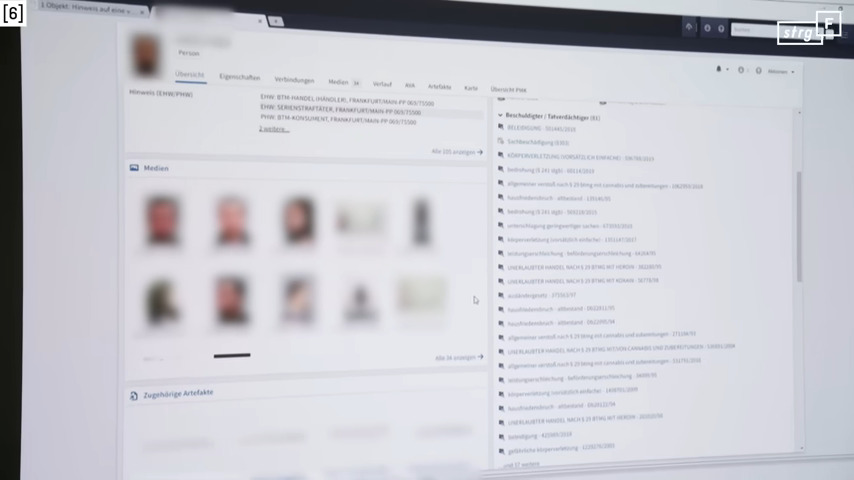
Short snapchot of the UI via YouTube-Video. For better understanding, watch it
In Germany, Gotham shows up under a different name. Nobody calls it Gotham here. Instead, it is branded as Datenanalyseplattform (DAP) or in Hessen specifically as Hessendata. Same company, same core engine, but adapted to fit local laws and politics.
The German deployment is essentially a stripped down Gotham. You still get the main features: entity extraction from reports, graph view of objects (people, places,…), timeline of events and of course map overlays for movements and hotspots.
What you do not get are the newer AI add-ons like Palantir’s AIP (see below under dev and AI) or generative assistants. That is not because the software could not handle it, but because German law draws a clear line: no predictive policing, no automated case theories, no black-box AI suggesting suspects. The platform is limited to linking and visualizing data that investigators already have, not inventing new hypotheses out of thin air.
The UI is also much more visible in Germany. Here the real interface has been shown on camera. In the STRG_F reportage, police officers themselves demonstrated how they use the system: uploading reports, watching entities appear, moving through graphs and timelines. It looks like what it is: a functional workstation, not a futuristic movie prop.
In short, the DAP is Gotham in practice clothes. Same stitching together of messy data, fewer futuristic bells and whistles and packaged under a neutral name so you do not have to say “Palantir” out loud.
Foundry – The Enterprise Data OS
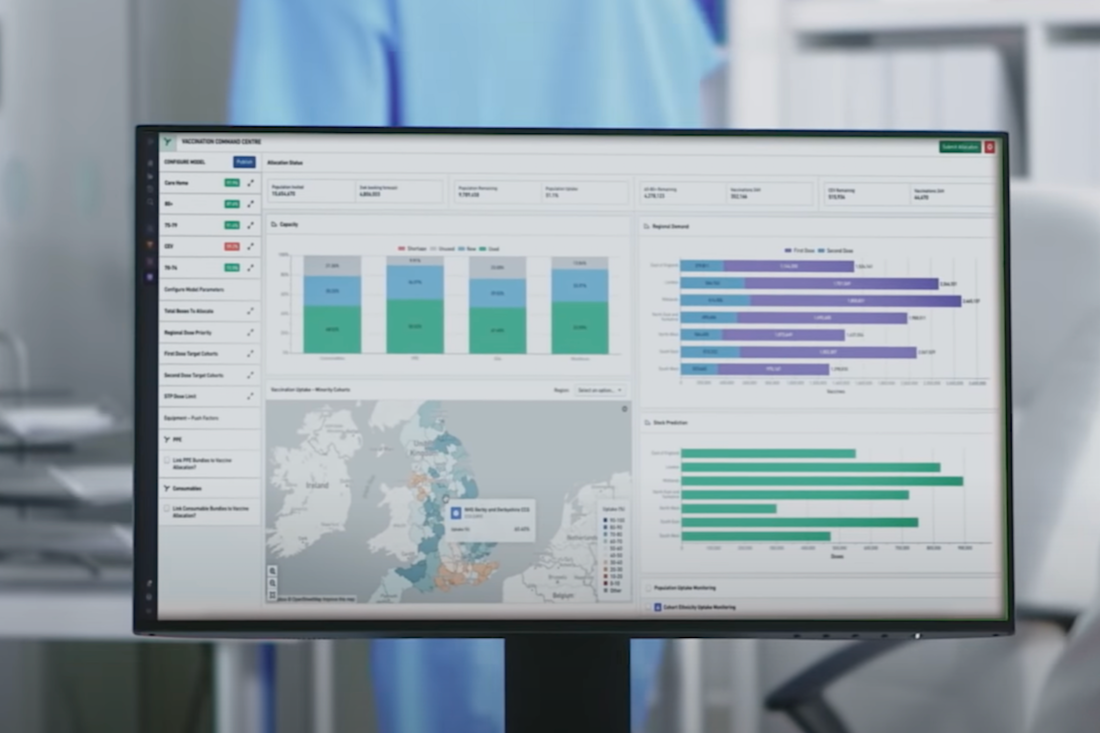
Hands-on via official website
If Gotham is the investigator’s playground, Foundry is the data plumber’s dream. It is built for companies, factories, research labs, supply chains and anyone else who normally drowns in spreadsheets and siloed systems.
Picture this: your ERP system, IoT sensors, Excel chaos and a few SQL databases all flowing into one platform. Foundry ingests them, cleans them up and aligns them. No more wondering if “customer_id” in one database is the same thing as “client_number” in another.
At the center of it is the Ontology. Think of it as a semantic map that tells the system what “customer,” “order,” or “factory” mean across all your data. Once that is in place, everything plugs into the same language, which means your finance team, your supply chain manager and your data scientist are finally looking at the same definitions instead of arguing over column names.
To get there, you build Pipelines. Foundry comes with a low-code editor, so business users can drag and drop transformations. Under the hood, the heavy lifting runs on Spark for batch jobs and Flink for streaming data. If you want more control, you can drop into Python, SQL or R directly. Every step is versioned, tested and logged, so you can roll back to see exactly how a dataset looked last week.
Once the data is shaped, you can do pretty much anything on top: dashboards, notebooks, ML models, live simulations. A supply chain manager can watch real-time shipment flows, while a data scientist can train a predictive model on the exact same cleaned dataset and neither has to fight with CSV exports.
If you want an analogy, Foundry feels like Snowflake, Tableau, GitHub and a workflow engine glued into one platform. It is not always pretty and it is definitely not lightweight, but it solves the biggest headache in enterprise data: getting everyone to work on the same source of truth without twenty brittle integrations.
Developer Access & AI
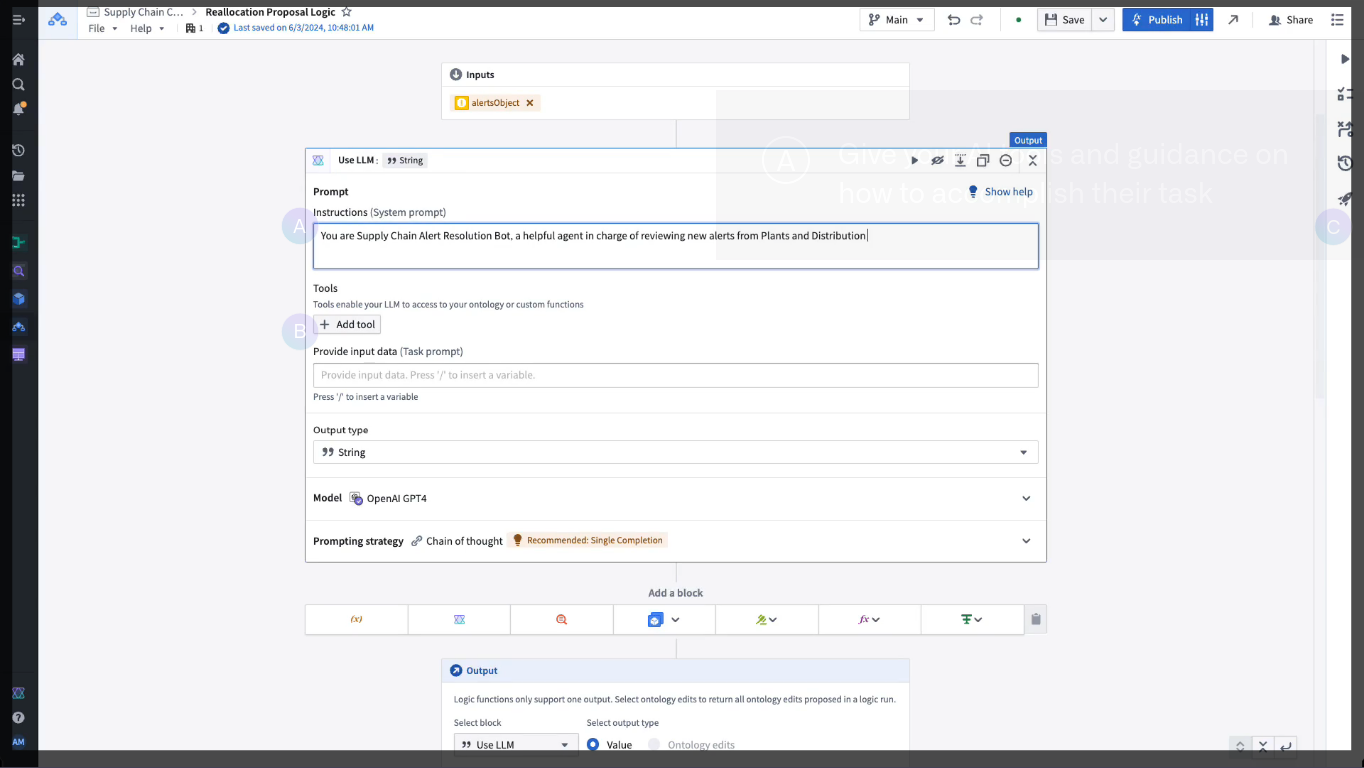
AI-Chat example via official website
Palantir is not a closed box. Both Gotham and Foundry expose ways for developers to plug in and extend what the platforms can do. The scope is very different though. Here’s what i could find out:
APIs and SDKs: Foundry ships with SDKs for Python, TypeScript and Java. You can generate client libraries directly from your Ontology, so your code speaks the same “language” as the platform. Gotham, on the other hand, exposes REST APIs, which i think is pretty useful if you want to pull case data, push new records or integrate external tools. Authentication runs over OAuth2 in both cases.
Compute Modules: In Foundry you can run your own containerized applications or ML models right inside the platform. Spin up a container, give it vCPUs, RAM or even GPUs and let it crunch data next to the pipelines. It scales automatically, even down to zero when idle. Gotham is less about custom compute and more about feeding in external data through connectors.
AI Layer (AIP): Foundry integrates directly with Palantir’s AIP (Artificial Intelligence Platform). That means AI agents, a model catalog with LLMs, scoped queries with strict access control and full audit logs of every interaction. Gotham in its international deployments can also be paired with AIP, but in practice it is mostly the enterprise side where AI is used to automate workflows and summarize data.
In short: you can build your own AI workflows in Foundry without duct-taping twenty cloud services together. And if you are working in Gotham, you at least have programmatic access to feed and extract data, even if the AI bells and whistles are not always switched on.
Security, but Technically
Security in Palantir is not an optional add-on, it is part of the core design. Access is fine-grained down to individual rows and objects, controlled with attribute tags and even tied to the purpose for which the data is being used (see above for workflow examples). Every transformation leaves a trail: lineage and audit logs let you replay exactly how a dataset looked at a given moment, whether that is last week or last Tuesday at 3 AM.
All data is encrypted both at rest and in transit, with hooks into hardware security modules or cloud key management systems. The platform itself is multi-tenant, which means different teams or even whole organizations can operate side by side without ever touching each other’s data. And finally, policy enforcement is not a checkbox on a compliance sheet but built into the runtime: if the rule says “only EU region,” the system makes sure it really stays that way.
It is less about flashy features and more about making sure that everything you do is logged, reproducible and locked down by design.
Use Cases
Foundry and Gotham end up in very different places, but under the hood they run on the same ideas. In pharma, Foundry has been used to streamline pipelines for clinical trial data and to monitor supply chains, which means new drugs can move from lab to production and into distribution faster. In logistics, it has been deployed to pull together data from half a dozen ERP systems, clean it up into one model and then optimize production costs and cut waste along the chain. And on the public sector side, Gotham powers police analysis: officers upload reports, the system extracts names and addresses automatically and within seconds the data can be explored as graphs, timelines and maps instead of scattered PDFs.
It is the same engine, just with different skins: one tailored for industry, one for investigators.
Compared to Other Tools
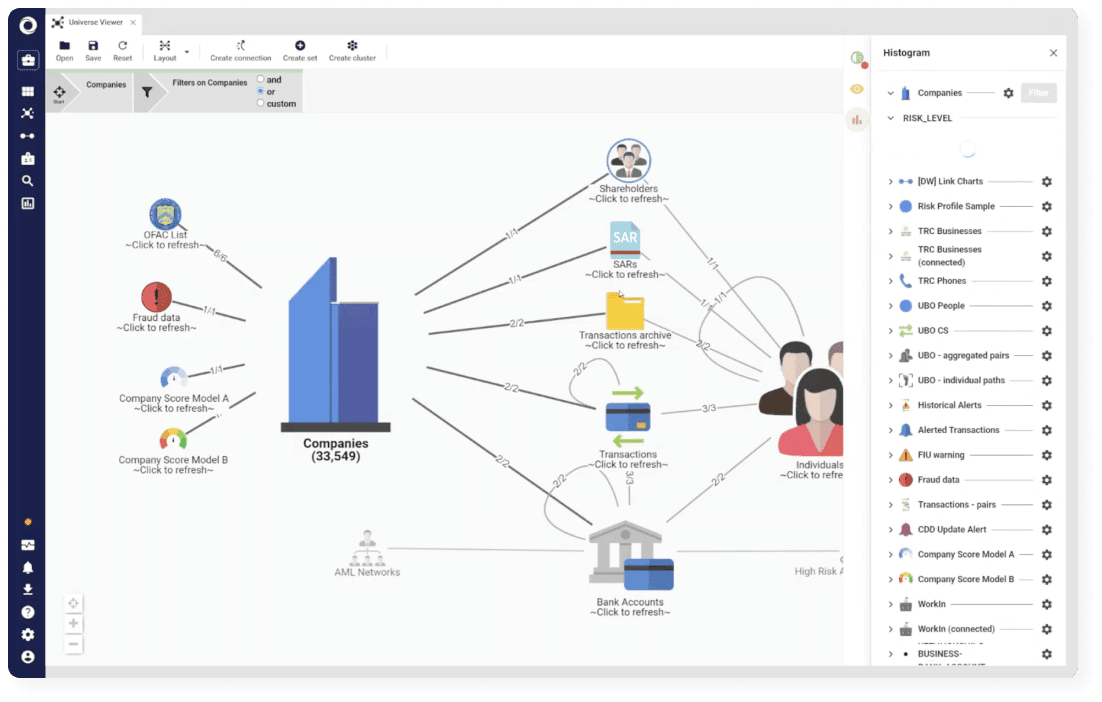
“Datawalk“: a (kinda) similiar tool
To make sense of Foundry it helps to compare it with what people already know. Snowflake is a great warehouse, but in the end it is mostly storage and SQL. Databricks is fantastic for ML engineers, yet tends to overwhelm anyone who is not deep into notebooks and Spark. Tableau or Power BI shine at visualization, but they stop at the front end and do not solve the data plumbing underneath.
Foundry tries to roll all of that into one roof. It is heavier, sometimes more frictional to use, but also more powerful because the whole stack is connected. Gotham, on the other hand, has fewer direct competitors. The closest would be tools like IBM Analyst’s Notebook or DataWalk, both focused on investigative graph analysis, but neither comes with the same integration depth or security layers.
So…
Palantir is not magic. It is not Skynet, not an oracle, not Jarvis. It is data plumbing plus analytics plus governance plus UI, packaged for people who cannot or do not want to build their own stack. Expensive? Absolutely. Mysterious? Less so, once you peek under the hood.
One thing to keep in mind: the software is only as good as the data you feed it. Clean, consistent input makes Gotham or Foundry powerful. Garbage in, garbage out still applies. And while conspiracy theories about Palantir secretly hoarding and cross-linking everyone’s data pop up often, the reality is more mundane: you have to bring the data yourself. Whether they could internally link more than they admit is an open question and not entirely far-fetched given who is involved, but for now the platform is designed to process what customers provide, not to scrape the world on its own.
What is harder to deny is that tools like this will only get more relevant in the years ahead. Data volumes keep exploding, AI is being woven into every layer of enterprise and government and the question is not whether platforms like Palantir will matter, but how they will be used. Politically, they raise questions of power and oversight. Technically, they are shaping how organizations move from raw data to real-time decisions.
So the next time someone drops “Palantir” in a debate, you will know: it is basically Excel, ChatGPT and Google Maps had a very expensive baby. And that baby is growing up fast.
AI, Data Integration, Data Pipelines, Enterprise Tech, Foundry, Gotham, Palantir, Software -- Sep 28, 2025
Print view